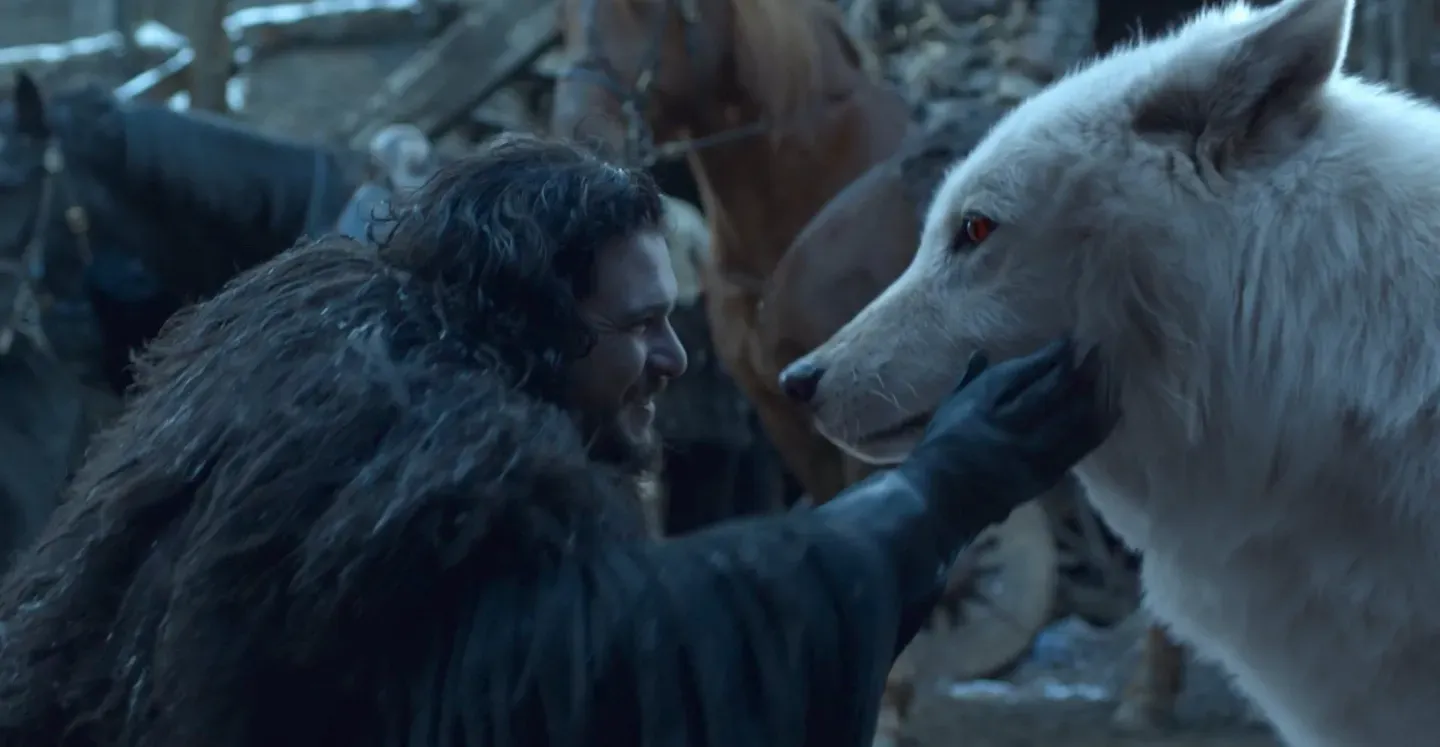Yabba dabba do yourself a favor and try Cinnamon Pebbles
Do kids even know that the Flintstones exist beyond the cereal aisle?
When it comes to bringing animals back from extinction, is close enough good enough?

Hey, Sloppos. (Slop Army? What are we calling Brain Slop readers?)
I learned two pretty major things last week. The first is that dire wolves were a real animal that actually existed, living in the Americas between 125,000 and 10,000 years ago. It turns out that they weren’t just the creation of George R. R. Martin for his A Song of Ice and Fire series. This whole time I’ve just assumed dire wolves were fictional creatures like the Chupacabra, unicorns or the brontosaurus.

The second big thing I learned last week is that a company called Colossal Laboratories & Biosciences has allegedly brought the dire wolf — which, I should reiterate, went extinct approximately 10,000 years ago — back to life.
On October 1, 2024, for the first time in human history, Colossal successfully restored a once-eradicated species through the science of de-extinction. After a 10,000+ year absence, our team is proud to return the dire wolf to its rightful place in the ecosystem. Colossal’s innovations in science, technology and conservation made it possible to accomplish something that's never been done before: the revival of a species from its longstanding population of zero.
Time published a major profile of Colossal and its three dire wolves, named Romulus, Remus and Khaleesi, on Monday.
Relying on deft genetic engineering and ancient, preserved DNA, Colossal scientists deciphered the dire wolf genome, rewrote the genetic code of the common gray wolf to match it, and, using domestic dogs as surrogate mothers, brought Romulus, Remus and their sister, 2-month-old Khaleesi, into the world during three separate births last fall and this winter — effectively for the first time de-extincting a line of beasts whose live gene pool long ago vanished.
This is the second splash that Colossal has made over the past few weeks. The company was in the news last month when they announced that they had created the wooly mouse, a mouse with some of the genetic traits of a wooly mammoth. (Think a lot of fur, not massive tusks.) The wooly mouse and the dire wolf are all part of Colossal work to eventually bring the wooly mammoth back from extinction.
“Our mammoths and dire wolves are mammoths and dire wolves by that definition,” Beth Shapiro, Colossal’s chief science officer, told Time. “They have the key traits that make that lineage of organisms distinct.”
Not everyone agrees with Colossal’s insistence that these animals are their long-extinct relatives back from the dead.
“Dire wolves were not close relatives of gray wolves,” Riley Black, author of The Last Days of the Dinosaurs and When the Earth Was Green wrote on Bluesky. “They last shared a common ancestor more than 5 million years ago. What Colossal has done is make something new and slapped a dire wolf sticker on it, as if an organism equals a hypothetical genome.”
Black has previously written about dire wolves, publishing a piece on Scientific American back in January 2021 about how the extinct animals “were not wolves at all, but rather the last of a dog lineage that evolved in North America.”
“Colossal’s ‘dire wolves’ are the Cybertruck of genetics,” she added on Monday.
Despite the coverage last week triumphantly declaring that Colossal had de-extincted the dire wolf, the company quietly acknowledges that the animals that they’re bringing back from the dead aren’t the same thing as the original species.
No matter how the resulting woolly baby might look, Colossal admits that in some respects it will be a mammoth in name only. “They’re elephant surrogates that have some mammoth DNA to make them re-create core characteristics belonging to mammoths,” says Shapiro.
But that might be a distinction without a difference. If it looks like a mammoth and behaves like a mammoth and, if given the opportunity to breed with another engineered elephant with mammoth-mimicking DNA, produces a baby mammoth, it’s hard to say that the species hasn’t been brought back from the dead. “Our mammoths and dire wolves are mammoths and dire wolves by that definition,” says Shapiro. “They have the key traits that make that lineage of organisms distinct.”
Also adding to the growing ickiness about this announcement? That revelation that Martin, whose books have been adapted into Game of Thrones and House of the Dragon, is an investor in Colossal.

All this talk of bringing extinct animals back to life means I have to recommend Tusks of Extinction, a short novel by Ray Nayler. (The Mountain in the Sea and Where the Axe Is Buried, Nayler’s first two full-length novels, are two of my favorite books from the past few years.) I won’t spoil too much of Tusks of Extinction, but let’s just say it might involve a scientist’s “digitalized consciousness” being “downloaded” into the mind of a resurrected mammoth.
📖 The Return of the Dire Wolf (Jeffrey Kluger, Time)
Brain Slop will be off next Sunday, April 20. The newsletter will return on April 27.

@null780 this took me longer than id ever like to admit #axolotl #theresanaxolotl
♬ original sound - rossreign

Join the hundreds of subscribers who already get the free Popculturology, Deep SNL Thoughts and Snackology newsletters.